- Home
- Stephen Baxter
Last and First Contacts (Imaginings) Page 10
Last and First Contacts (Imaginings) Read online
Page 10
With aching fingertips and toes, he continued his climb.
Unexpectedly, he reached the top of the chimney. It opened out into a wider space, a cave perhaps, filled with that ruddy light. He hoisted himself up the last short way, swung his legs out onto the floor above, and stood up.
And he was stunned.
He was standing on flat ground, a plain that seemed to go on forever. It was covered in dust, very red, so fine it stuck to the sweat on his legs. He turned slowly around. If this was the floor of a cave – well, it was a cave with no walls. And the roof above must be far away too, so far he could not see it; above him was nothing but a dome of darkness. And in one direction, facing him, something lifted over the edge of the world. It was a ruddy disc, perfectly circular, just a slice of it protruding over the dead-flat horizon. It was the source of the crimson light, and he could feel its searing heat.
Ruul inhabited a convoluted world of caverns and chimneys; he had never seen anything like the purity of this utterly flat plain, the perfectly circular arc of that bow of light. He had no word for sky. The clean geometric simplicity of the landscape drew his soul; he stared, entranced.
Three hundred million years after the life and death of Tura and Bel, this was what Earth had become. The sediments on which Ruul stood were the ruins of the last mountains. The magmatic currents of a cooling world had not been able to break up the new supercontinent, as they had the first. Meanwhile the sun’s relentless warming continued. By now only microbes inhabited the equatorial regions, while at the poles a few hardy, tough-skinned plants were browsed by sluggish animals heavily armoured against the heat. Earth was already losing its water, and Pangaea’s shoreline was rimmed by brilliant-white salt flats.
But the boy standing on the eroded-flat ground was barely changed from his unimaginably remote ancestors, from Tura and Cale and Urlu and even Jaal. It had never been necessary for humans to evolve significantly, for they always adjusted their environment so they didn’t have to – and in the process stifled evolutionary innovation.
It was like this everywhere. After the emergence of intelligence, the story of any biosphere tended to get a lot simpler. It was a major reason for the silence of the stars.
But on Earth a long story was ending. In not many generations from now, Ruul’s descendants would succumb; quietly baked in their desiccating caves, they would not suffer. Life would go on, as archaic thermophilic microbes spread their gaudy colours across the land. But man would be gone, leaving sandstone strata nearly a billion years deep full of hearths and chipped stones and human bones.
‘Ruul! Ruul! Oh, there you are!’ His mother, caked by red dust, was clambering stiffly out of the chimney. ‘Somebody said you came this way. I’ve been frantic. Oh, Ruul – what are you doing?’
Ruul spread his hands, unable to explain. He didn’t want to upset his mother, but he was excited by his discoveries. ‘Look what I found, mother!’
‘What?’
He babbled excitedly about hearths and tools and bones. ‘Maybe people lived here in great heaps, and the smoke of their fires rose up to the sky. Mother, will we come to live here again?’
‘Perhaps one day,’ his mother said at random, to hush him.
But that wasn’t answer enough for Ruul. Restless, curious, he glanced around once more at the plain, the rising sun. To him, this terminal Earth was a place of wonder. He longed to explore. ‘Let me go on. Just a little further!’
‘No,’ his mother said gently. ‘The adventure’s over. It’s time to go. Come now.’ And she put her arm around his shoulders, and led him home.
The Pacific Mystery
[Editor’s note: The saga of the return of the aerial battleship Reichsmarschall des Grossdeutschen Reiches Hermann Goering to London’s sky, and of the heroic exploits of a joint team of RAF and Luftwaffe personnel in boarding the hulk of the schlachtschiff, has overshadowed the story of what befell her long-dead crew, and what they discovered during their attempted Pacific crossing – inasmuch as their discoveries are understood at all. Hence, with the agreement of the family, the BBC has decided to release the following edited transcript of the private diary kept onboard by journalist Bliss Stirling. Miss Stirling completed the Mathematical Tripos at Girton College, Cambridge, and during her National Service in the RAF served in the Photographic Reconnaissance Unit. For some years she was employed as a cartographer by the Reich in the mapping of the eastern Kommissariats in support of Generalplan Ost. She was also, of course, a noted aviatrix. She was but twenty-eight years old at the time of her loss.]
May 15th, 1950. Day 1. I collected my Spitfire at RAF Medmenham and flew up into gin-clear English air. I’ve flown Spits all over the world, in the colonies for the RAF, and in Asia on collaborative ops with the Luftwaffe. But a Spit is meant to fly in English summer skies – I’ve always regretted I was too young to be a flyer in the Phoney War, even if no shots were fired in anger.
And today was quite an adventure, for I was flying up to engage the Goering, the Beast, as Churchill always referred to her before his hanging. Up I climbed, matching its eastward velocity of a steady two hundred and twenty knots towards central London – I matched her, the Beast was not about to make a detour for me. You can hardly miss her even from the ground, a black cross-shape painted on the sky. And as you approach, it is more like buzzing a building, a skyscraper in New York or Germania perhaps, than rendezvousing with another aircraft.
I was thrilled. Who wouldn’t be? On board this tremendous crate I was going to be part of an attempt to circumnavigate the world for the first time in human history, a feat beyond all the great explorers of the past: we would be challenging the Pacific Mystery. Always providing I could land on the bloody thing first, for it was on the back of the Beast, a riveted airstrip in the sky, that I was going to have to bring down my Spit.
I swept up above the Beast and then vectored in along her spine, coming in from the stern over a tailplane that is itself the height of St Paul’s. I counted the famous four-deep banks of wings with their heavy engine pods and droning props, and saw the glassy blisters of gun-turrets at the wing tips, on the tailplane and around the nose. It’s said that the Beast carries her own flak guns. A few small stubby-winged kites, which I later learned the Germans called ‘chariots’, were parked up near the roots of the big wing complexes. The whole is painted black, and adorned with Luftwaffe crosses. Despite the rumoured atom-powered generator in her belly, it is scarcely possible to believe such a monstrosity flies at all, and I can quite believe it is impossible for her ever to land.
And, like all Nazi technology, she is seductively beautiful.
I’ve done my share of carrier landings, but that final approach through a forest of A/T booms and RDF antennae was hairier than any of them. Pride wasn’t going to allow me the slightest hesitation, however. I put my wheels down without a bump, my arrestor hook caught on the tag lines, and I was jolted to a halt before the crash barriers. On the back of the Beast stood a batsman in a kind of all-over rubber suit, harnessed to the deck to stop from being blown off. He flagged me to go park up under a wing-root gun turret.
So I rolled away. Bliss Stirling, girl reporter, on the deck of the Goering! Somewhere below, I knew, was London. But the Beast’s back is so broad that when you stand on it you can’t see the ground…
Day 2. The highlight of my day was an expensive lunch in what Doctor Ciliax calls ‘one of the lesser restaurants of the schlachtschiff’, all silver cutlery and comestibles from the provinces of Greater Germany, Polish beef and French wine. It is like being aboard an ocean liner, or a plush Zeppelin, perhaps.
As we ate the Beast circled over Germania, which Jack Bovell insists on calling ‘Berlin’, much to Ciliax’s annoyance. Fleets of tanker craft flew up to load us with oil, water, food and other consumables, and we were buzzed by biplanes laden with cine-cameras, their lenses peering at us.
Jack Bovell is one of the Token Yanks on board to witness the journey, much as I am a Token Brit
ish. He is a flying officer in the USAAF, and will, so he has been promised, be allowed to take the controls of the Beast at some point during this monumental flight. We Tokens are in the charge of Wolfgang Ciliax, himself a Luftwaffe officer, though as an engineer he never refers to his rank. He is one of the Beast’s chief designers. The three of us are going to be spending a lot of time together, I think. What joy.
This morning Ciliax took Jack and me on a tour of the Beast. Of course we weren’t shown anything seriously interesting such as the ‘atom engine’, or the ‘jet’ motors rumoured to be deployed on some of the chariots. Ciliax in fact showed rare restraint for a boffin, in my experience, in not blurting out all he knew about his crate just for the love of her. But we were dazzled by a flight deck the size of a Buckingham Palace reception room, with banks of chattering teletypes and an immense navigational table run by some of the few women to be seen on board. There are lounges and a ballroom and a library, and even a small swimming pool, which is just showing off.
Other guests walked with us, many from the upper tiers of the occupied nations of Europe. We were tailed by an excitable movie-film crew. Leni Riefenstahl is said to be directing a film of our momentous voyage, though she herself isn’t aboard. And many sinister-looking figures wore the black uniforms of the SS. Pressed by Jack Bovell, Ciliax insists that the Goering is a Luftwaffe crate and the SS has no authority here.
Below decks, we walked through a hold the size of the Albert Hall. We marvelled at mighty aquifers of oil and water. And we were awed by the double transverse internal bulkheads and the hull of inches-thick hardened steel: rivets the size of my fist.
‘She really is a battleship in the sky,’ Jack said, rather grudgingly. And he was right; the ancestry of this monstrous schlachtschiff lies truly among the steel behemoths of the oceans, not fragile kites like my Spitfire.
Jack Bovell is around thirty, is stocky – shorter than me – stinks of cigar smoke and pomade and brandy, and wears a battered leather flight jacket, even at dinner. I think he’s from Brooklyn. He’s smarter than he acts, I’m sure.
‘Ah, yes, of course she is a schlachtschiff,’ said Ciliax, ‘but the Goering is an experimental craft whose primary purposes are, one, a demonstration of technology, and two, an explorative capability. The Goering is the first vessel in human history capable of challenging the mighty scale of the Pacific.’ That habit of his of speaking in numbered lists tells you much about Wolfgang Ciliax. He is quite young, mid-thirties perhaps, and has slicked-back blond hair and glasses with lenses the size of pennies.
‘“Explorative capability”,’ Jack said sourly. ‘And that’s why you made a point of showing us her armour?’
Ciliax just smiled. Of course that was the point.
Every non-German on board this bloody plane is a spy to some degree or other, including me. Whatever we discover about the world as we attempt to cross the Pacific, we neutral and occupied nations are going to be served up with a powerful demonstration of the Reich’s technological capabilities. Everyone knows this is the real game. But Jack keeps breaking the rules. In a way he is too impatient a character for the assignment he has been given.
Jack, incidentally, sized me up when he met me, and Ciliax, who isn’t completely juiceless, takes every opportunity to touch me, to brush my hand or pat my shoulder. But Jack seems sniffy. To him I’m an emblem of a nation of appeasers, I suppose. And to Ciliax I’m territory to be conquered, perhaps, like central Asia. No doubt we will break through our national types in the days to come. But your heroine is not going to find romance aboard the Reichsmarschall des Grossdeutschen Reiches Hermann Goering, I don’t think!
Day 3. Memo to self: follow up a comment of Ciliax’s about the ‘helots’ who tend the atom engines.
These machines are contained within sealed lead-lined bulkheads, and nobody is allowed in or out – at any rate, not me. The atomic motors are a focus of interest for us spies, of course. Before this flight the RAF brass briefed me about the Nazis’ plans to develop weapons of stunning power from the same technology. Perhaps there is a slave colony of untermenschen, Slavs or gypsies, trapped inside those bulkheads, tending the glowing machines that are gradually killing them, as we drink wine and argue over politics.
In the afternoon I sat in one of the big observation blisters set in the belly of the Beast and made a broadcast for the BBC. This is my nominal job, to be Britain’s eyes and ears during this remarkable mission. We are still orbiting Germania, that is Berlin. Even from the air the vast reconstruction of the last decade is clear to see. The city has been rebuilt around an axial grid of avenues each a hundred yards wide. You can easily pick out the Triumphal Arch, the Square of the People, and the Pantheon of the Army which hosts a choreography of millions. Jack tuts about ‘infantile gigantomania’, but you have to admire the Nazis’ vision. And all the while the tanker planes fly up to service us, like bees to a vast flower…
Day 5. A less pleasant lunch today. We nearly got pranged.
We crossed the old border between Germany and Poland, and are now flying over what the Germans call simply ‘Ostland’, the vast heart of Asia. With Ciliax’s help we spotted the new walled colony cities, mostly of veteran German soldiers, planted deep in old Soviet territories. They are surrounded by vast estates, essentially each a collective farm, a kolkhoz, taken from the Bolsheviks. There the peasantry toil and pay their tithes to German settlers.
Jack grumbled and groused at this, complaining in his American way about a loss of freedom and of human rights. But he’s missing the point.
‘Americans rarely grasp context,’ said Ciliax with barely concealed contempt. ‘It is not a war for freedom that is being fought out down there, not a war for territory. Asia is the arena for the final war between races, the climax of a million years of disparate human evolution. As the Fuhrer has written, “What a task awaits us! We have a hundred years of joyful satisfaction before us.”’ I must say that when Ciliax spouts this stuff he isn’t convincing. He’s fundamentally an engineer, I think. But one must labour for whoever holds the whip.
(Memo: check the source of that Hitler quote.)
Since Germania we have been accompanied by fighters, mostly Messerschmitts, providing top cover and close escort, and Jack Bovell and I have been happily spotting types and new variants. And we have seen lighter, faster fighters streaking across our field of view. They may be the ‘jet fighters’ we’ve read about but have never seen up close. I know plenty of RAF brass who regret that the Phoney War ended in May 1940, if only for the lost opportunity for technical advancement. This ravaged continent is obviously a crucible for such advancement. Jack and I craned and muttered, longing to see more of those exotic birds.
And then the show started. We were somewhere over the Ukraine.
One fighter came screaming up through our layers of escorts. It arced straight up from the ground like a firecracker, trailing a pillar of smoke. I wondered aloud if it actually had rockets strapped to its tail. Ciliax murmured, as if intrigued by a puzzle.
You have to understand that we were sitting in armchairs in an observation blister. I even had a snifter of brandy in my hand. There was absolutely no sense of danger. But still the unmarked rocket-plane came on.
A deep thrumming made the surface of my brandy ripple; the Beast, lumbering, was changing course.
‘If that thing gets through,’ I said, ‘it’s harps and halos and hello St Peter for us.’
‘You don’t say,’ said Jack Bovell.
Ciliax said nothing.
Then a chance pencil of flak swept across the nose of the rocket-plane, shattering the canopy over its cockpit. It fell away and that was that; I didn’t even see the detonation when it fell to earth.
Jack blew out his cheeks. Wolfgang Ciliax snapped his fingers for more brandies all round.
We orbited over the area of the attempted strike for the next eight hours. Ciliax, meanwhile, took me and Jack down to a hold. The bombs were slim, blue and black steel, perfe
ctly streamlined; they looked like ‘upturned midget submarines’, as Jack said. You can drop them from as high as twenty thou. I thought this was another piece of typically beautiful Nazi technology, but Ciliax said the bombs are a British design, made under licence by Vickers Armstrong in Weybridge, whose chief designer is a man called Barnes Neville Wallis. ‘They are as British as the banks of Rolls Royce Merlin engines that keep the Goering aloft,’ Ciliax told me, his bespectacled eyes intent, making sure I understood my complicity. But I thought he was mostly incensed that anybody had dared raise a hand against his beautiful machine.
That night the Goering dropped stick after stick of these ‘Tallboy’ bombs on the site from which the rocket plane seemed to have been launched. I have no idea whether the assault was successful or not. The movie people filmed all this, in colour.
With the bombs dropped, we flee east, towards the dawn. I must try to catch some sleep …
Day 7. We have already crossed China, which is the subject of a colonisation programme by the Japanese, a mirror image to what the Germans are up to in the west. Eurasia is a vast theatre of war and conquest and misery, a theatre that stretches back all the way to the Channel coast. What a world we live in!
Still, now we are past it all, a goodly chunk of the world’s circumference already successfully traversed. Our escort has fallen away. Our last supply convoy was Japanese; Jack has threatened to drop their raw fish suppers out of the bomb bays.
And now, alone, we are facing our ultimate target: the Pacific Ocean. We are so high that its silver skin glimmers, softly curving, like the back of some great animal.
Jack is taking his turns in a pilot’s seat on the bridge. This afternoon I was given permission from Ciliax to go up there. I longed to play with the controls. ‘I have a hunch I’m a better stick man than you,’ I said to Jack.
Jack laughed. Sitting there, his peaked cap on, his flight jacket under a webbing over-jacket, he looked at home for the first time since I’d met him. ‘I dare say you’re right. But Hans is a better man than either of us.’

 The Martian in the Wood
The Martian in the Wood THE H-BOMB GIRL
THE H-BOMB GIRL World Engine
World Engine Titan n-2
Titan n-2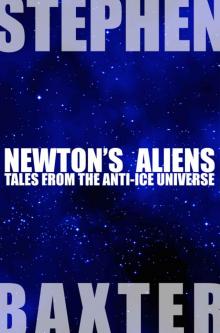 Newton's Aliens: Tales From the Anti-Ice Universe
Newton's Aliens: Tales From the Anti-Ice Universe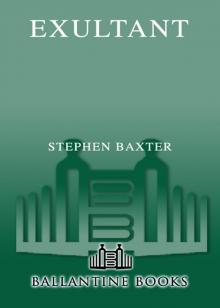 Exultant
Exultant Manifold: Origin
Manifold: Origin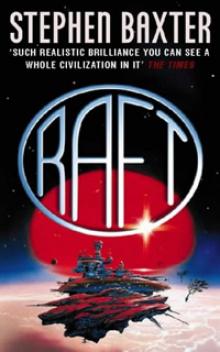 Raft xs-1
Raft xs-1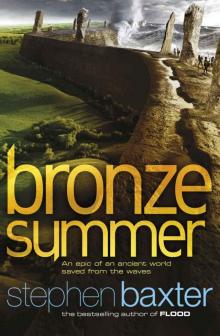 Bronze Summer n-2
Bronze Summer n-2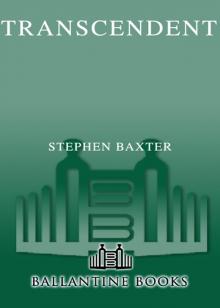 Transcendent
Transcendent Stone Spring
Stone Spring Coalescent
Coalescent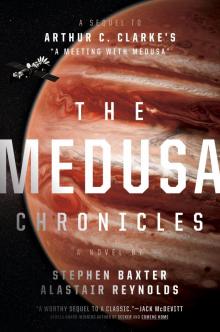 The Medusa Chronicles
The Medusa Chronicles Origin m-3
Origin m-3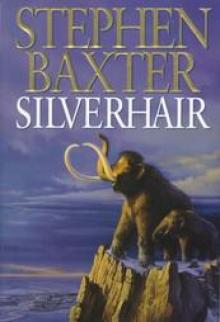 Silverhair tm-1
Silverhair tm-1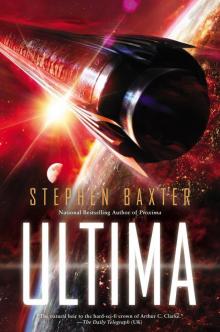 Ultima
Ultima Voyage n-1
Voyage n-1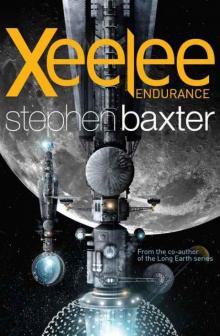 Xeelee: Endurance
Xeelee: Endurance Space m-2
Space m-2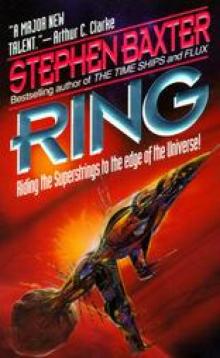 Ring xs-4
Ring xs-4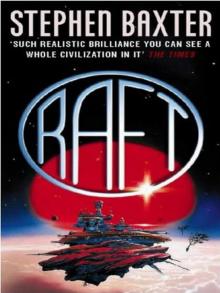 Raft
Raft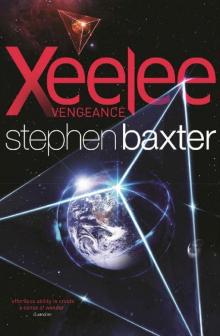 Xeelee: Vengeance
Xeelee: Vengeance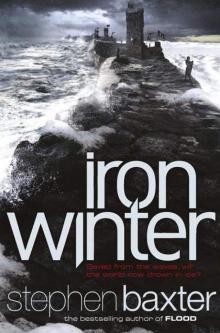 Iron Winter n-3
Iron Winter n-3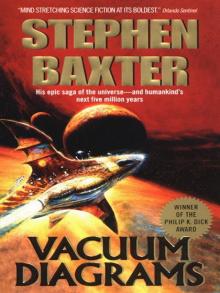 Vacuum Diagrams
Vacuum Diagrams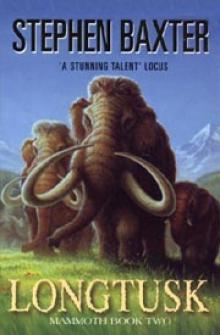 Longtusk tm-2
Longtusk tm-2 Proxima
Proxima Evolution
Evolution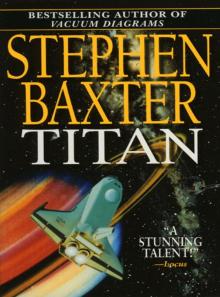 Titan
Titan Last and First Contacts (Imaginings)
Last and First Contacts (Imaginings) Emperor
Emperor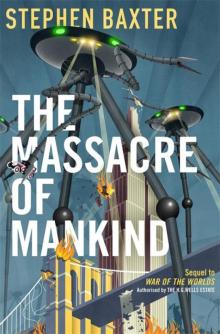 The Massacre of Mankind
The Massacre of Mankind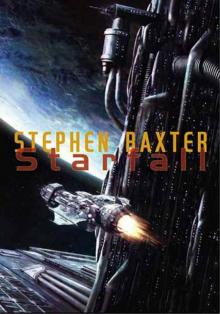 Starfall
Starfall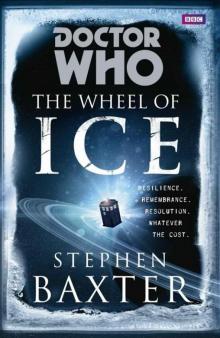 Doctor Who - The Wheel of Ice
Doctor Who - The Wheel of Ice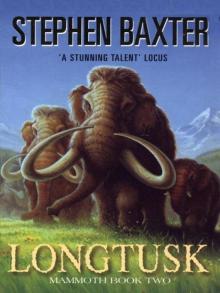 Longtusk
Longtusk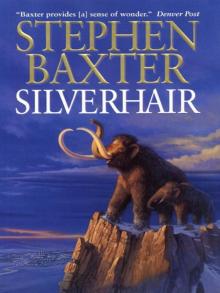 Silverhair
Silverhair Conqueror tt-2
Conqueror tt-2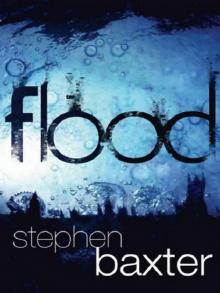 Flood
Flood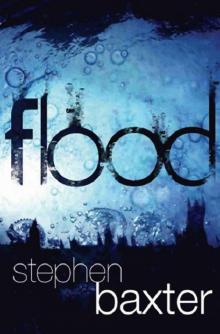 Flood f-1
Flood f-1 Emperor tt-1
Emperor tt-1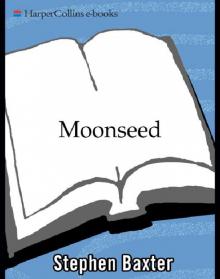 Moonseed
Moonseed Conqueror
Conqueror Timelike Infinity xs-2
Timelike Infinity xs-2 The Ghost Pit
The Ghost Pit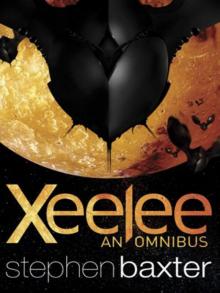 Xeelee: An Omnibus: Raft, Timelike Infinity, Flux, Ring
Xeelee: An Omnibus: Raft, Timelike Infinity, Flux, Ring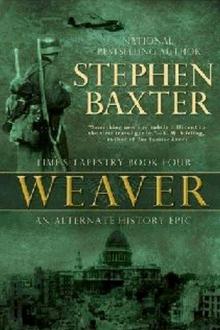 Weaver tt-4
Weaver tt-4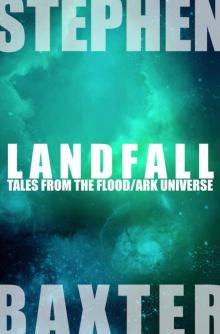 Landfall: Tales From the Flood/Ark Universe
Landfall: Tales From the Flood/Ark Universe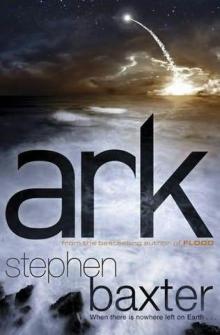 Ark
Ark Emperor: Time’s Tapestry Book One
Emperor: Time’s Tapestry Book One Space
Space Icebones
Icebones Manifold: Space
Manifold: Space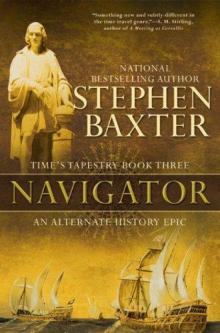 Navigator
Navigator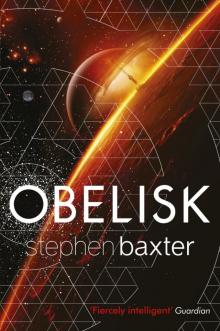 Obelisk
Obelisk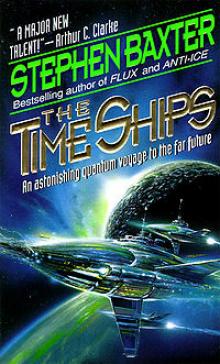 The Time Ships
The Time Ships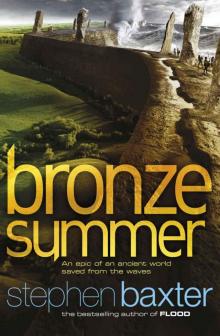 Bronze Summer
Bronze Summer Resplendent
Resplendent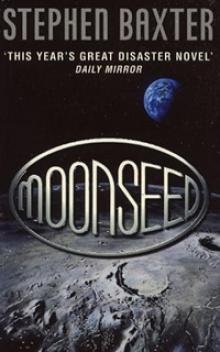 Moonseed n-3
Moonseed n-3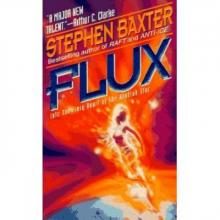 Flux xs-3
Flux xs-3 Transcendent dc-3
Transcendent dc-3 Icebones tm-3
Icebones tm-3 Phase Space
Phase Space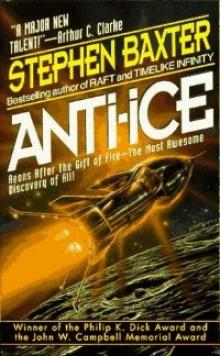 Anti-Ice
Anti-Ice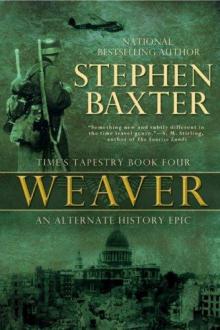 Weaver
Weaver Voyage
Voyage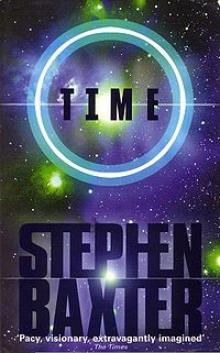 Time m-1
Time m-1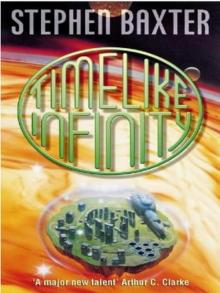 Timelike Infinity
Timelike Infinity Exultant dc-2
Exultant dc-2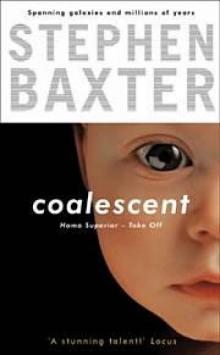 Coalescent dc-1
Coalescent dc-1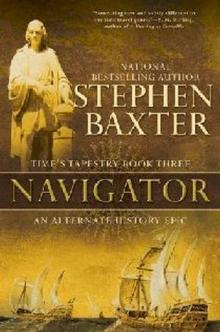 Navigator tt-3
Navigator tt-3